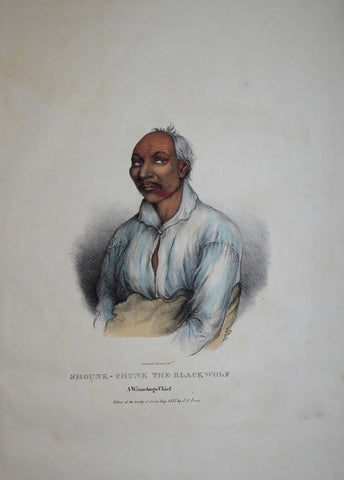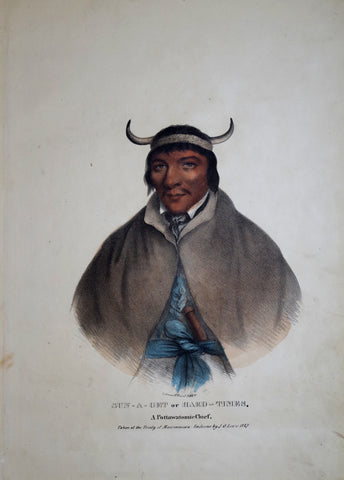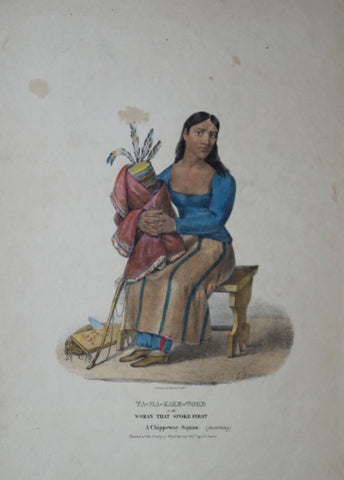Search By Artist
James Otto Lewis (1799-1858)
From The Aboriginal Portfolio.
Philadelphia: J. O. Lewis, 1835-1836.
Lithographs by Lehman & Duval.
Original hand coloring.
These portraits were made "on the spot and in the field" by James Otto Lewis, mostly during a series of treaty meetings in the Upper Great Lakes region during the 1820s. The American Indian as a worthy subject for study long occupied the attention of the U.S. Congress. A significant number of Indian pictures were produced in the first half of the nineteenth century, executed by artists commissioned by the Federal government. Lewis was so employed for nearly fifteen years, working primarily in Wisconsin and Indiana, where he painted portraits that eventually appeared in his Aboriginal Portfolio. Issued in serial parts in Philadelphia from 1835 to 1836, it was the first series of its kind ever published.
Born in Philadelphia in 1799, Lewis began his career there as an engraver in 1815. In 1819 he made his first excursion to the Great Lakes frontier with Governor Lewis Cass of Michigan Territory, and from 1823-34 he was officially assigned to paint Indian portraits in the West. In this capacity, Lewis was present at the signing of the Treaty of Prairie du Chien in 1825, where he painted the portraits of between fifty and sixty of the most prominent chiefs, and at Fond du Lac in 1826. In October of 1826, he was again present when treaties were negotiated with the Pottawatomi and Miami tribes in Indiana. The following summer he was at Buttes des Morts on the Fox River in Wisconsin to witness the signing of the Treaty of Green Bay. His first-hand experience at these important historical events, combined with his talent as a portraitist, enabled him to make a unique record of the chiefs who took part in all of these treaties.
The Aboriginal Portfolio was Lewis’s master work. The original edition, completed two years before McKenney & Hall's portfolio of Indian portraits, is the rarest work on western Indians. It is interesting to note that McKenney & Hall borrowed some of the designs for inclusion in their portrait gallery, a work which the authority Bennett refers to as “more glamorous” than Lewis’s Aboriginal Portfolio but less “convincing” (Bennett, p. 68). While most of the McKenney & Hall prints were based on the work of Charles Bird King, Lewis was the original artist for 27 of the 150 prints that were eventually published in their History of the Indian Tribes of North America.
Lewis's Aboriginal Portfolio was to be published in ten monthly parts, beginning in May 1835, each part of which was to contain eight hand-colored lithographs and was to be priced at $2. Unfortunately, the project ran into financial difficulties after the ninth part, and only a few of the images planned for the tenth part are known to have been published. Even the first nine parts were not issued in great number, and very few complete sets or individual prints have survived. We are thus especially delighted to be able to offer these rarest of American Indian prints, the first published likenesses of the Natives and unique on-the-spot visual records of their vanished civilizations.






